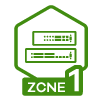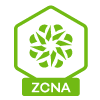Why Does My Network Still Run at 1Gbps After Configuring LAG?
 Zyxel Employee
Zyxel Employee



First, let's see how LAG Works. LAG (Link Aggregation) is a method of combining multiple physical ports into a single logical link. This setup is primarily used to increase the network's capacity to handle data traffic and improve reliability. A common misconception is that LAG increases the transmission speed of individual data flows, but it primarily enhances overall bandwidth.
Example:
Imagine a busy one-lane road, with cars representing data packets, all moving at the maximum speed limit (1Gbps). If this road is expanded into a two-lane highway, the speed limit for each car doesn't change; however, more cars can travel side by side. This is what LAG does for a network: it allows more data to flow concurrently, reducing congestion and improving overall throughput. Yet, each 'car' or data packet adheres to the 'speed limit' of the original single network cable.
Nami
Categories
- All Categories
- 439 Beta Program
- 2.8K Nebula
- 199 Nebula Ideas
- 125 Nebula Status and Incidents
- 6.3K Security
- 491 USG FLEX H Series
- 322 Security Ideas
- 1.6K Switch
- 83 Switch Ideas
- 1.3K Wireless
- 47 Wireless Ideas
- 6.8K Consumer Product
- 285 Service & License
- 455 News and Release
- 89 Security Advisories
- 31 Education Center
- 10 [Campaign] Zyxel Network Detective
- 4.3K FAQ
- 34 Documents
- 34 Nebula Monthly Express
- 85 About Community
- 95 Security Highlight